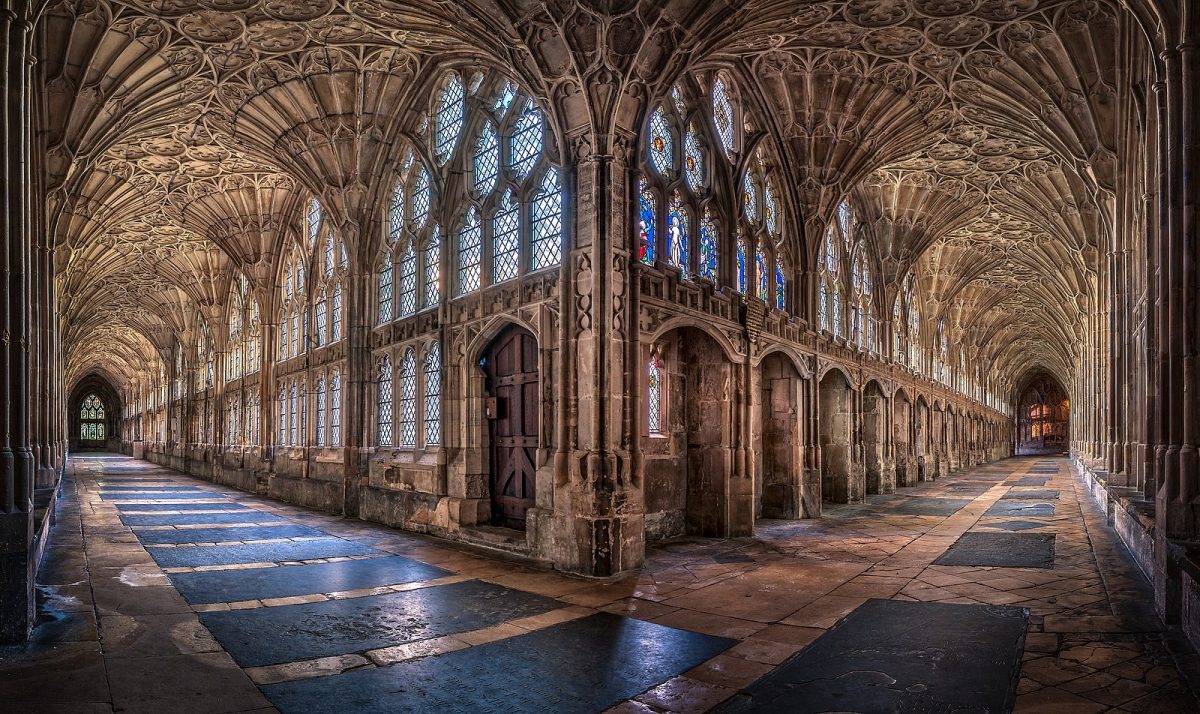The winners of the UK section of the world’s biggest photo contest Wiki Loves Monuments have just been announced, with the judges awarding fIrst prize to this stunning image of Gloucester Cathedral cloisters taken by Christopher JT Cherrington.
Chris has written a short blog post on the Wiki Loves Monuments website explaining how he took his winning image.
The 2018 contest
Wiki Loves Monuments is the world’s biggest photographic competition, with a total of 260,607 images submitted to the 2018 competition from all over the world. In the UK, 13,185 images taken by over 500 photographers were entered. The competition aims to gather high quality, openly-licensed images of historic sites from all over the world.
The contest is an incredible opportunity to document and preserve our heritage for future generations, and this year saw a particular focus on the capture of internal shots, as well as of those sites which were lacking a freely-licensed image in Wikidata, the knowledge base which sits behind Wikipedia.
Among this year’s winners are three castles (all in Wales), two lighthouses (New Brighton and Bass Rock), and one museum (Arbroath).
This year saw a marked increase in submissions from Scotland, with over double the number of entries submitted this year than in 2017. Wikimedia UK worked with Historic Environment Scotland’s publicly-available database of listed buildings and scheduled monuments to add over 27,000 new eligible items to Wikidata, vastly improving the coverage of Scotland.
PIctures submitted to this year’s contest are already being used to illustrate Wikipedia articles, and Wikimedia UK would like to extend their warmest thanks to all those who submitted entries, helping to significantly improve access to this knowledge.
The top ten UK winners now go forward to the international judging stage of the contest, where they will compete against the best images from some 55 other countries. The first, second and third placed UK winners receive £250, £100, and £50 respectively, with seven Highly Commended winners receiving £25 each.
Additional prizes have been awarded for the best three images from England, from Scotland and from Wales. Archaeology Scotland has also sponsored a special prize for the best photograph of a site in Scotland: a free 1-year membership including the Archaeology Scotland Magazine as well as access to their learning resources.
One of the competition’s judges noted that the quality and variety of images submitted continues to increase:
“Each year the standard of entries for Wiki Loves Monuments UK rises. Browsing through the long list of almost 250 images was made enjoyable and easy because of the quality of the images and the variety of locations from across the British Isles on display, narrowing it down to a shortlist of just 10 was a much harder process. It is a real pleasure to have been involved in the judging of this competition and to see the skill and dedication of the winning photographers recognised.”
Find out more about the prizes on the Wiki Loves Monuments website.
Winners
[slideshow_deploy id=’4443′]
The winners are as follows. Click the title for access to more details and high resolution copies on Wikimedia Commons.
UK winners
- 1st: The Cloisters at Gloucester Cathedral
- 2nd: Sunrise at West Pier (Brighton)
- 3rd: Hardknott Roman Fort (Cumbria)
UK highly commended
- Carreg Cennen Castle
- Dinefwr castle at sunrise
- Farnborough Portable Airship Hangar at Sunset
- Humber Bridge
- New Brighton Lighthouse
- New Brighton Shelter
- Walthamstow Dogs
Scotland
Wales
- 1st: Dinefwr castle at sunrise
- 2nd: Carreg Cennen Castle
- 3rd: Paxton Tower
England
- 1st: The Cloisters at Gloucester Cathedral
- 2nd: Sunrise at West Pier (Brighton)
- 3rd: Hardknott Roman Fort (Cumbria)
Special prize
The most prolific photographer of “new” UK historic sites was Paul the Archivist, who uploaded more than 200 pictures of sites which hadn’t previously been represented in the database.
For the complete list of the UK award winners and shortlisted images, well as access to high-resolution copies, see the winners’ page on Wikimedia Commons.






